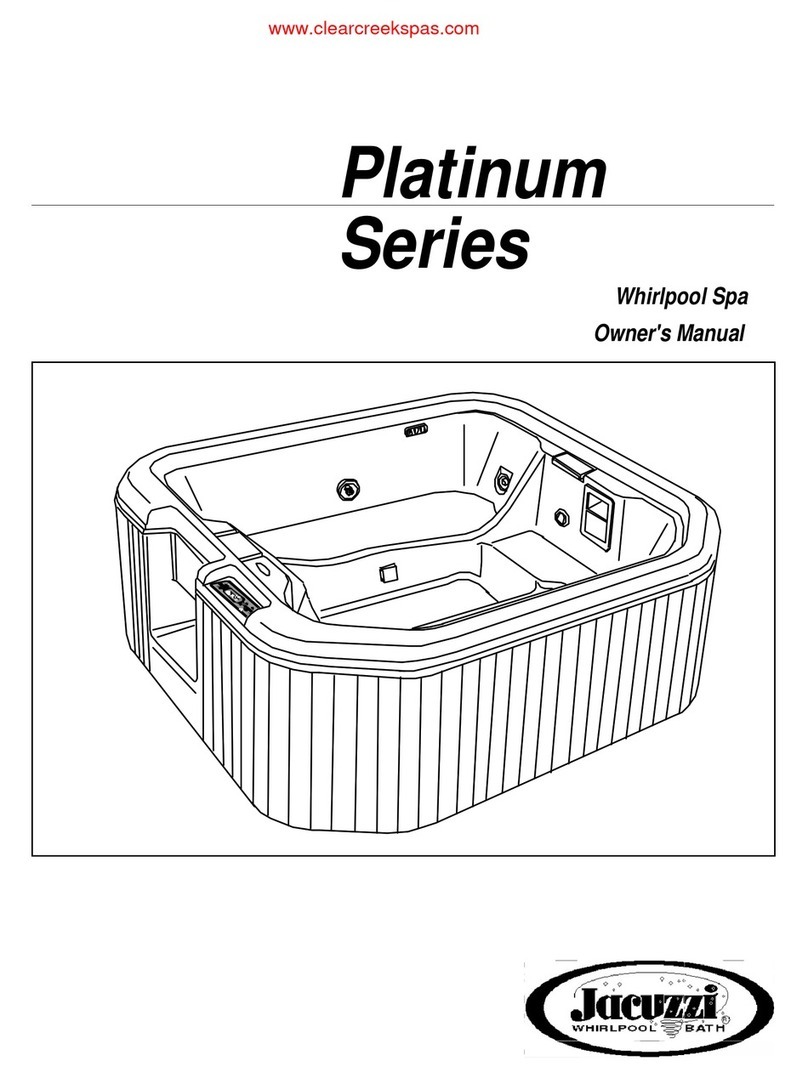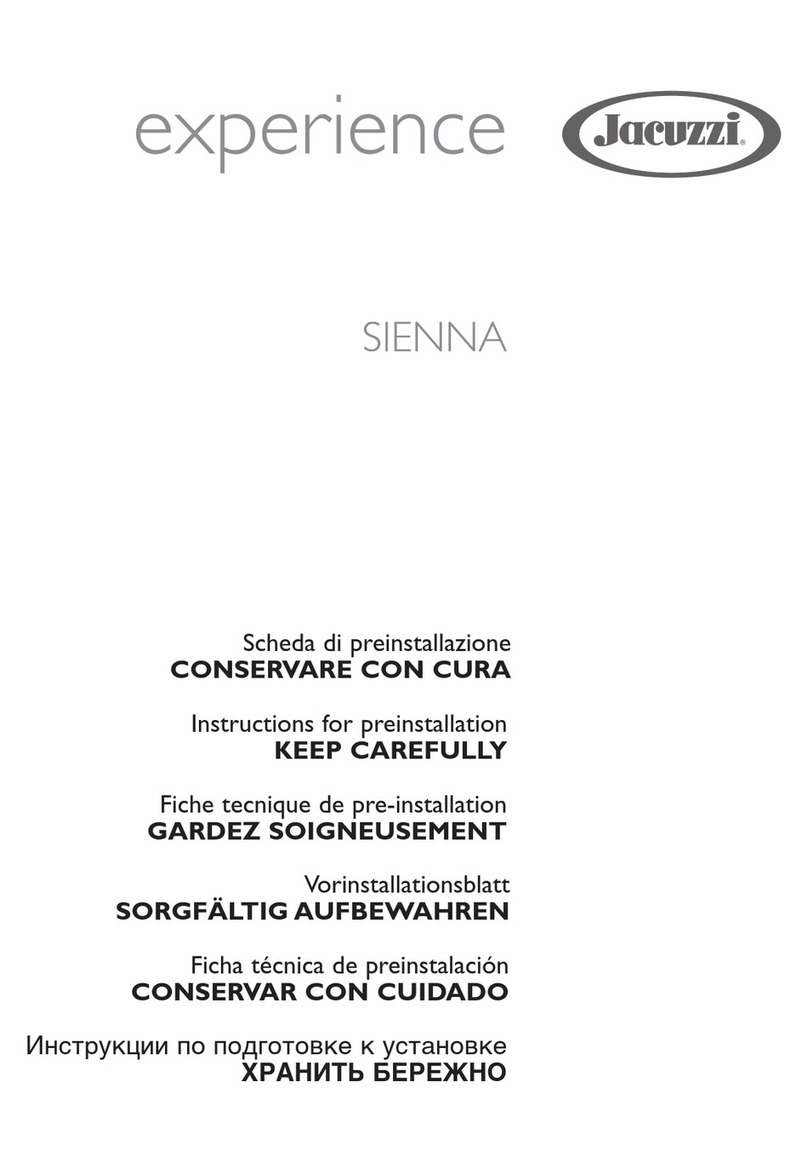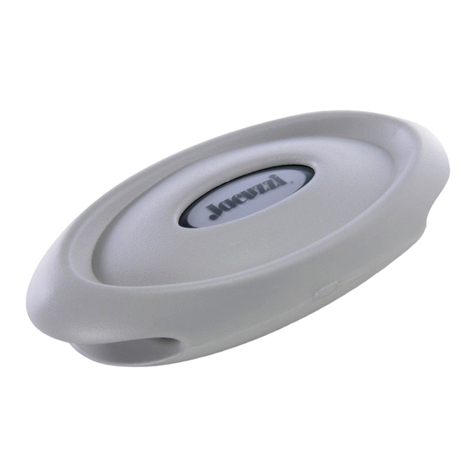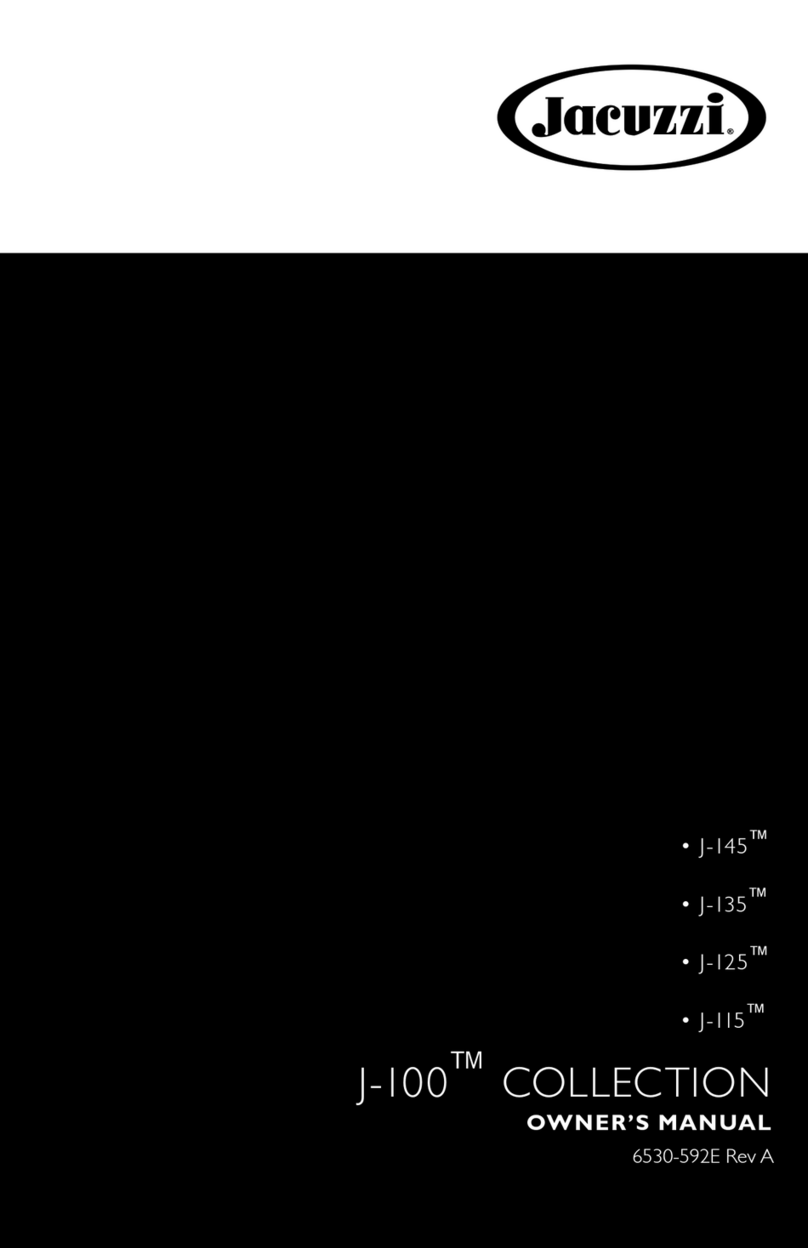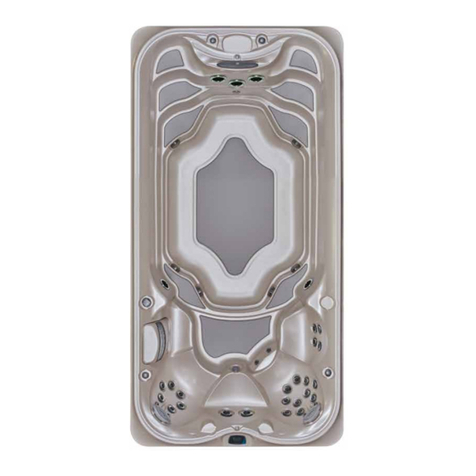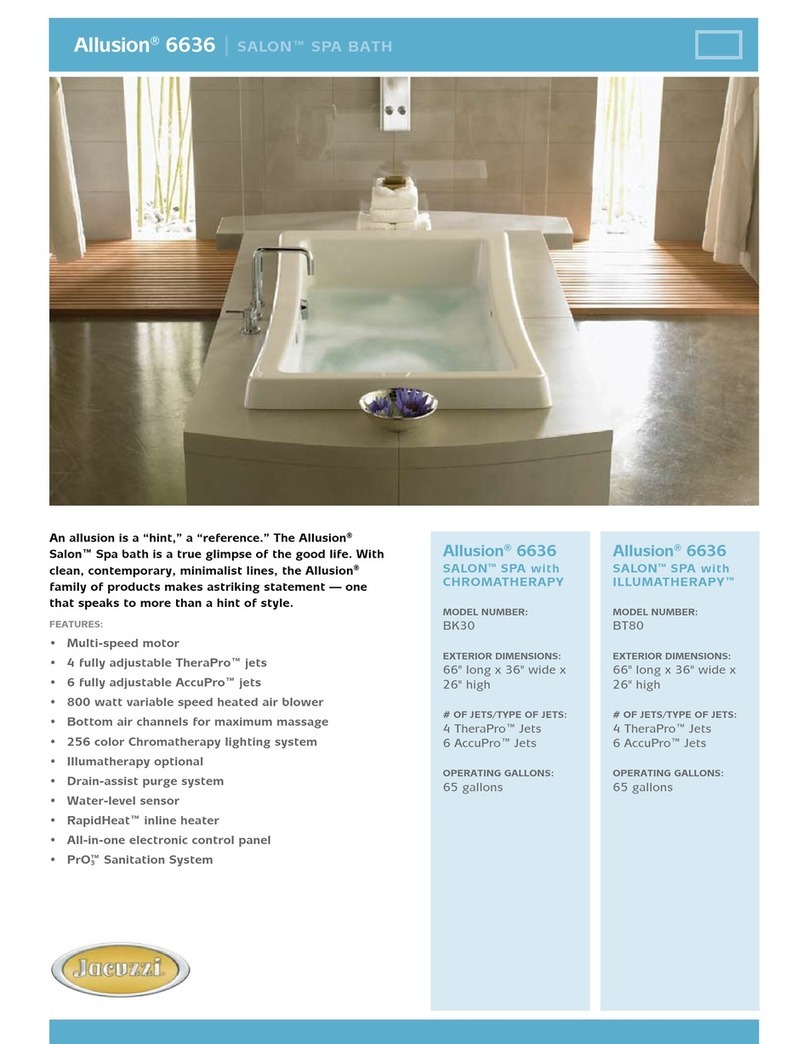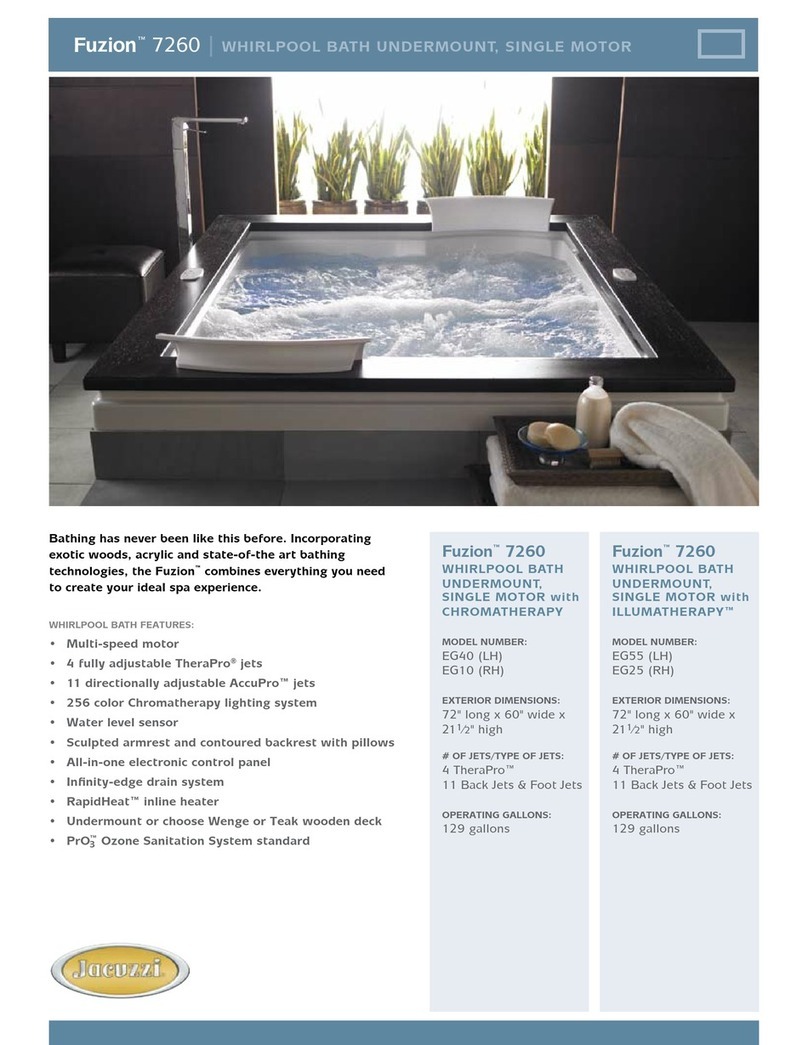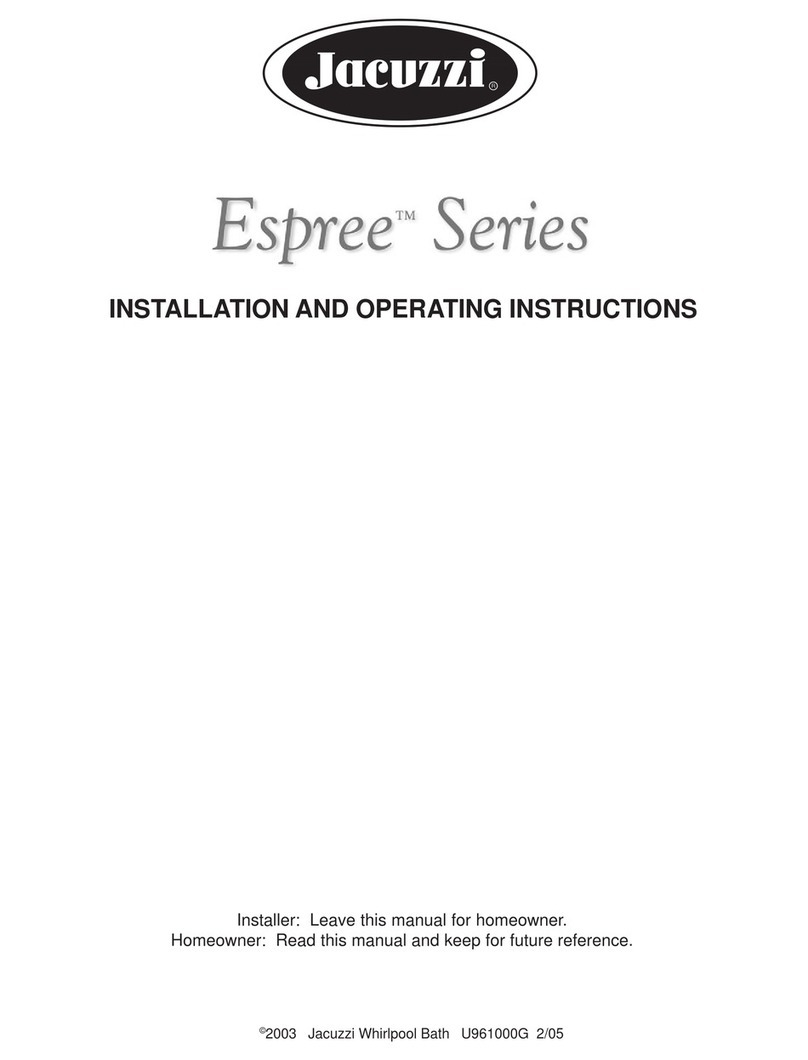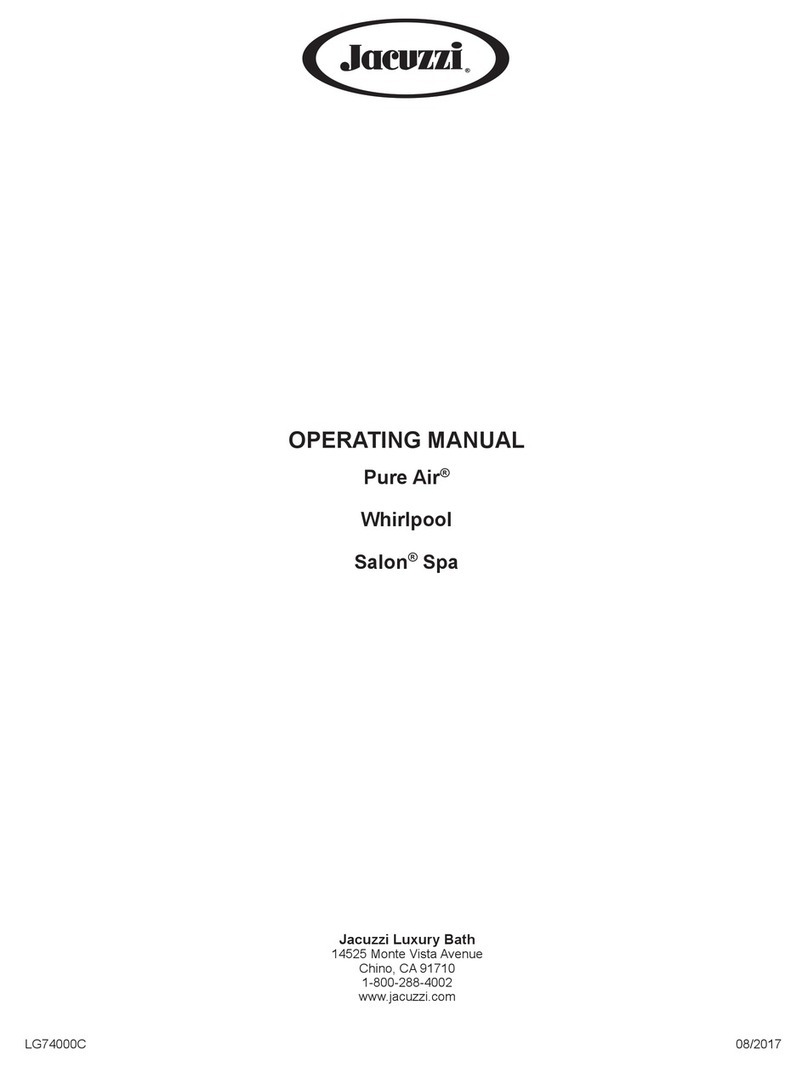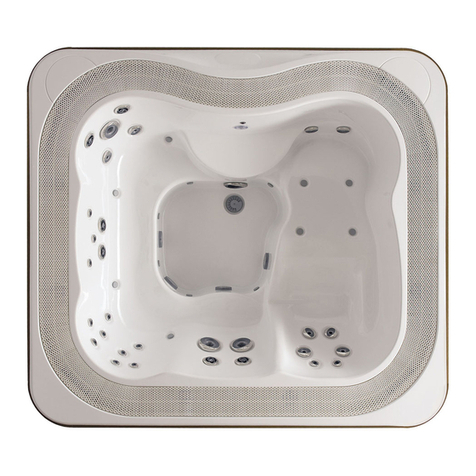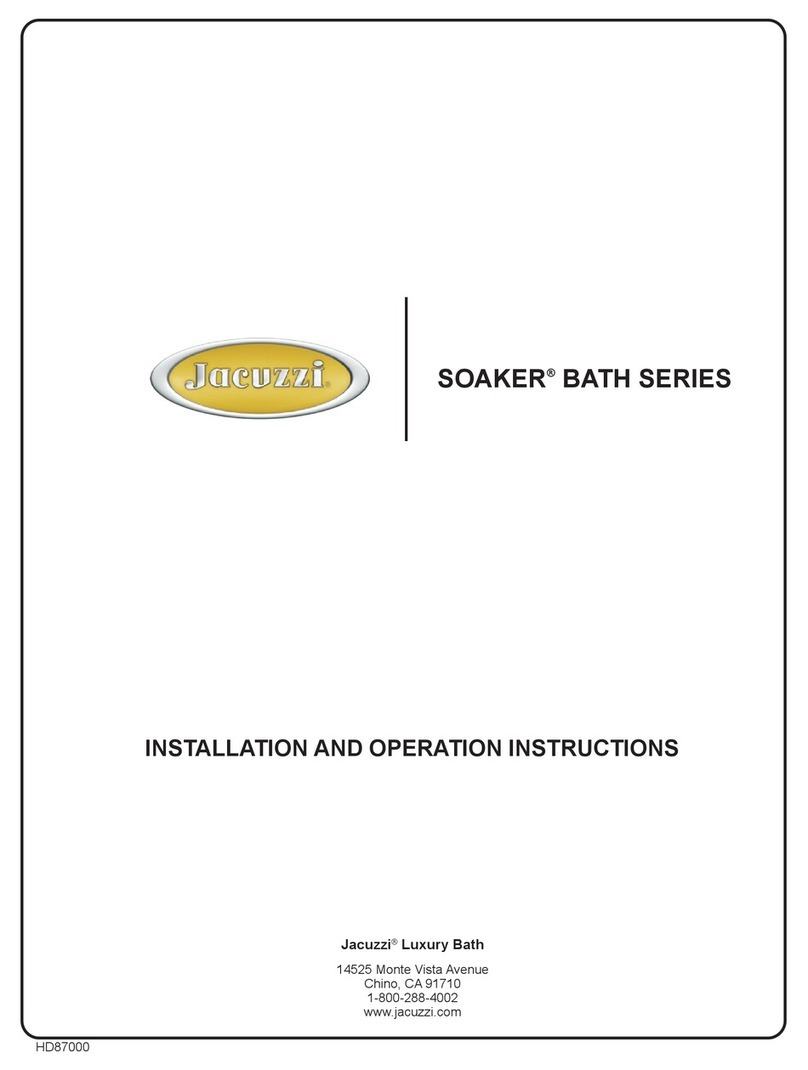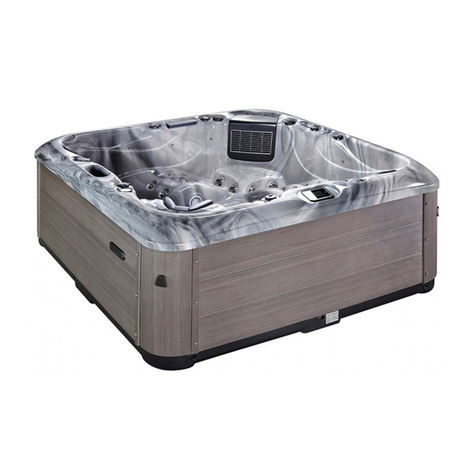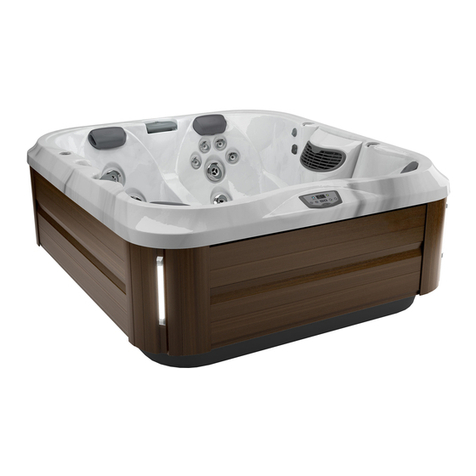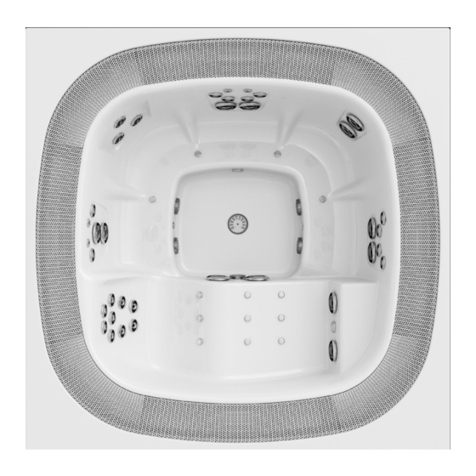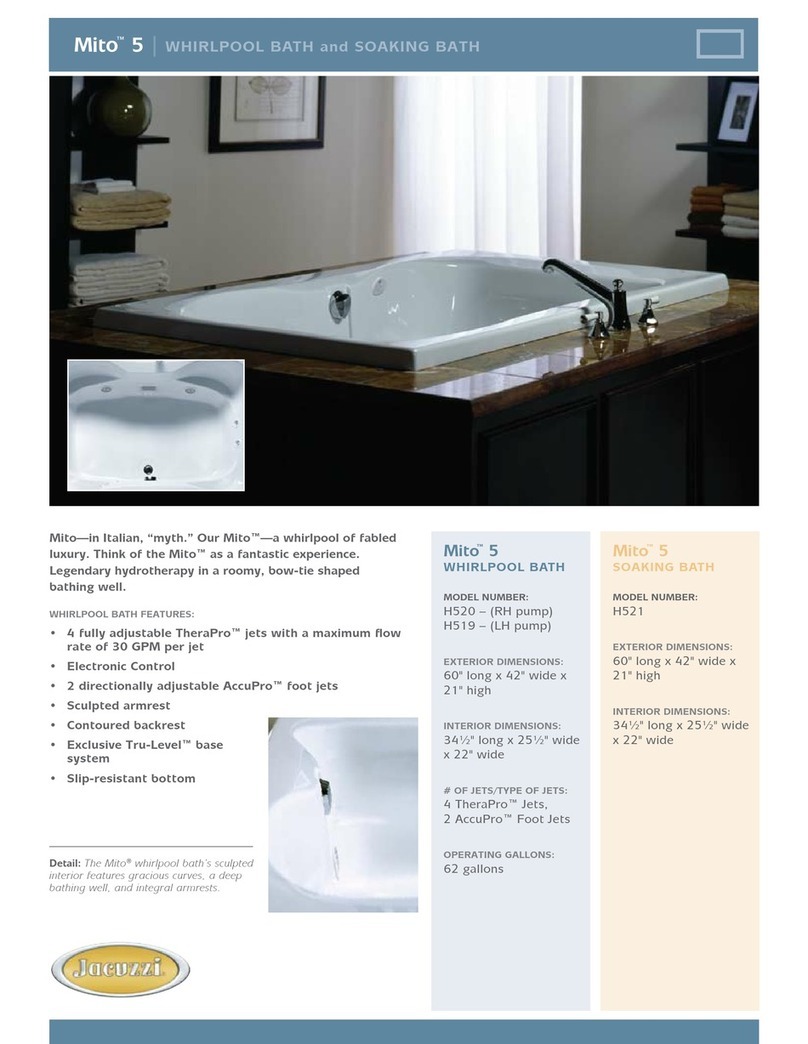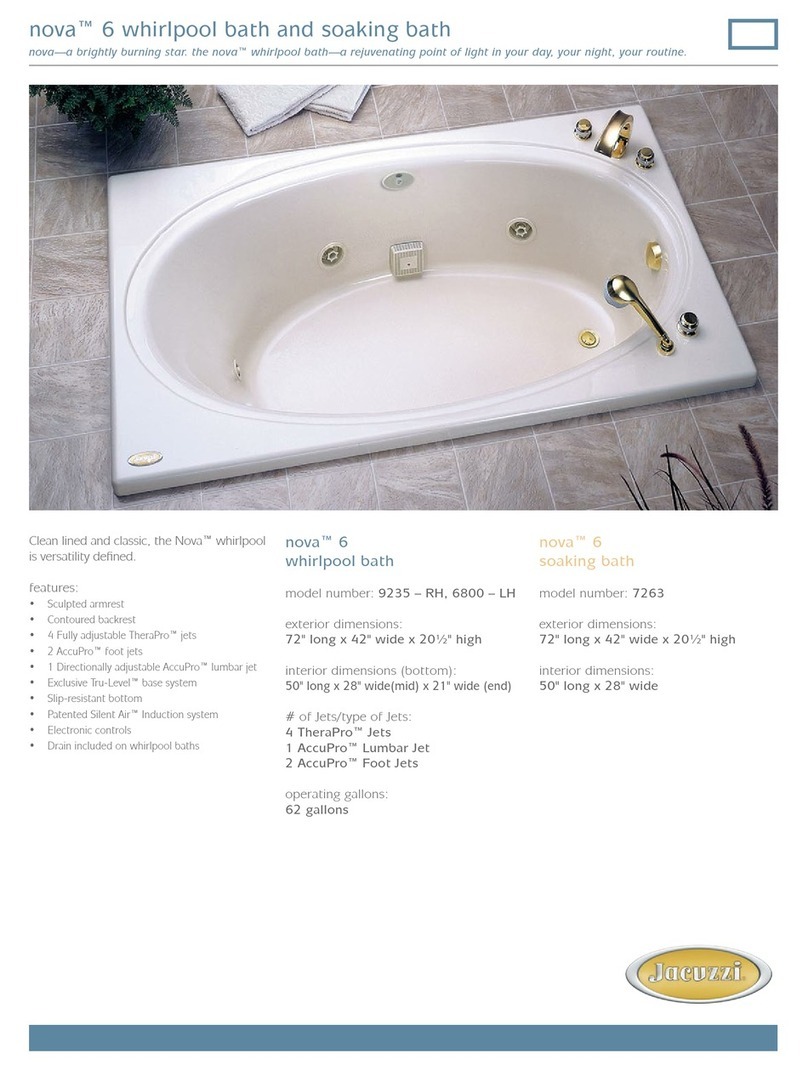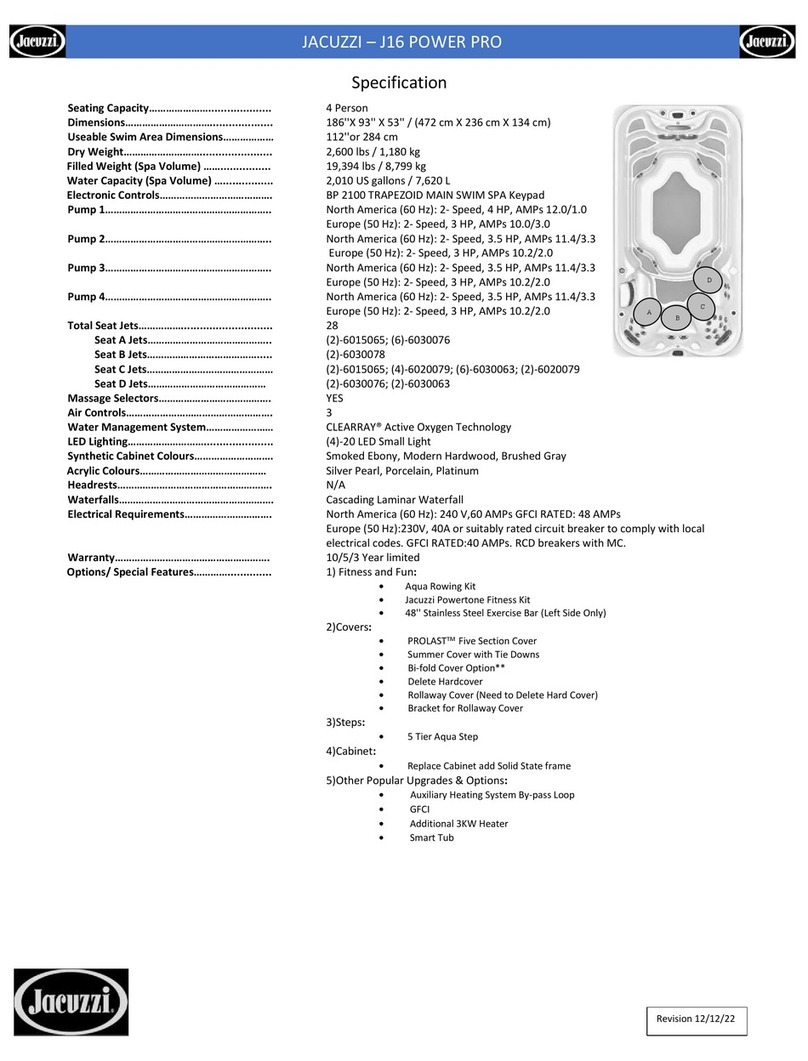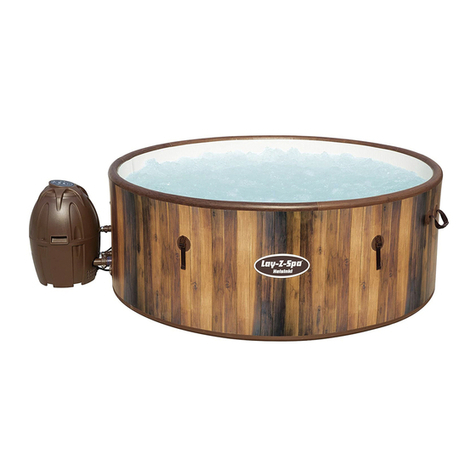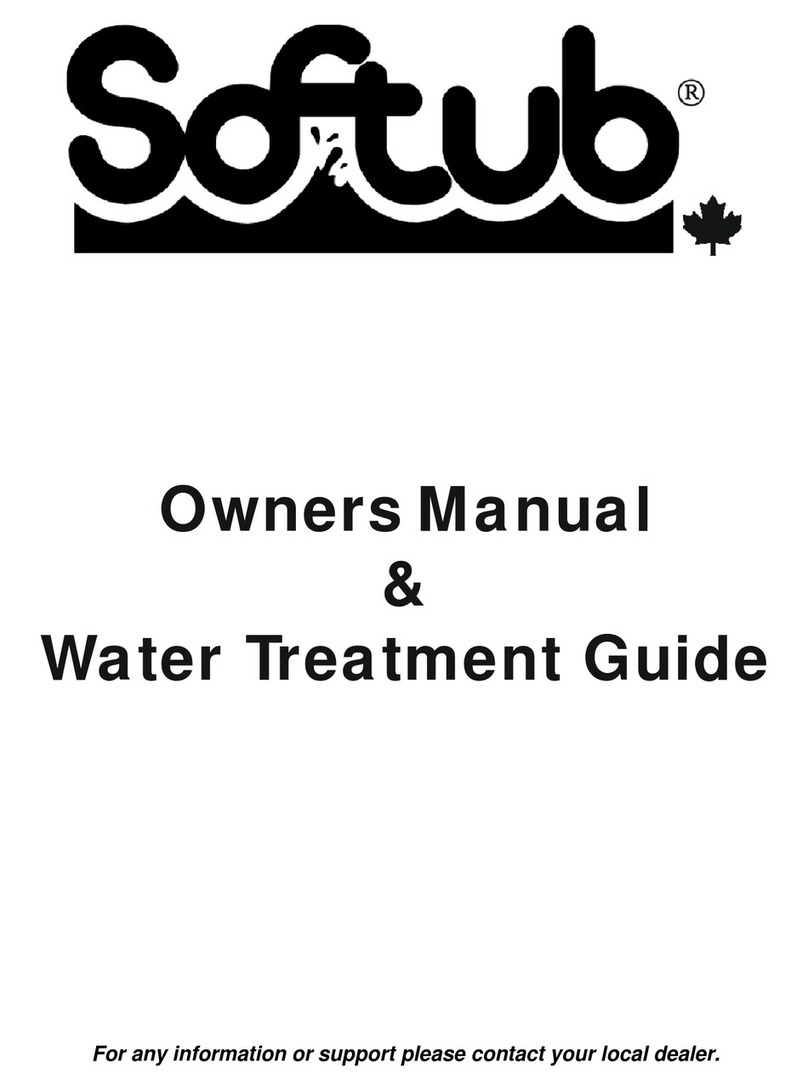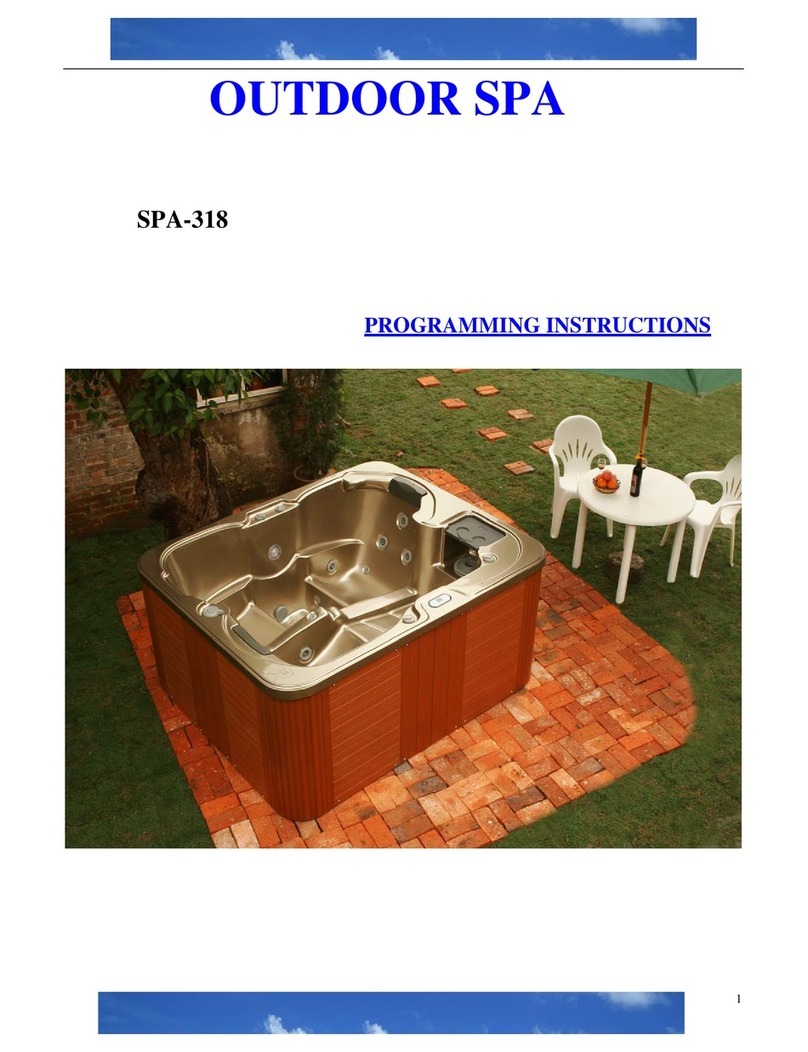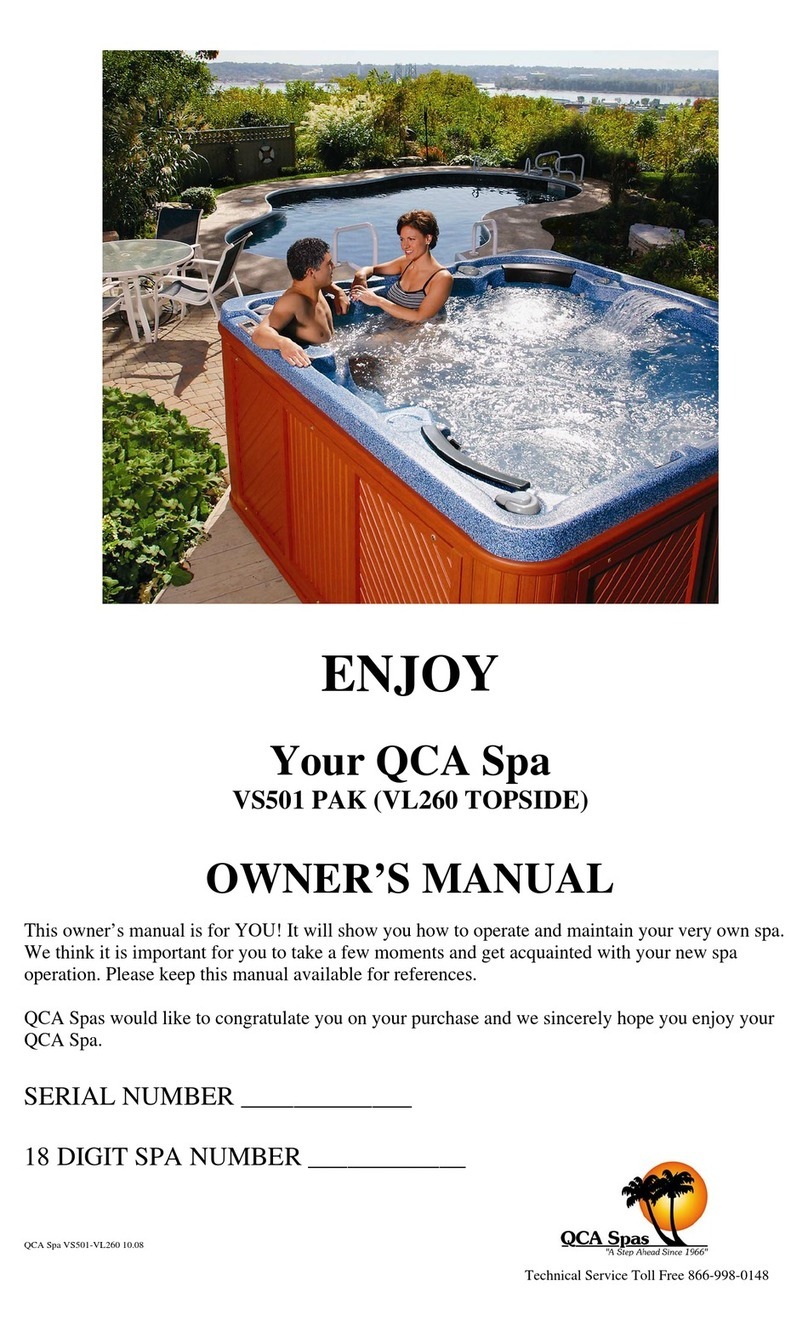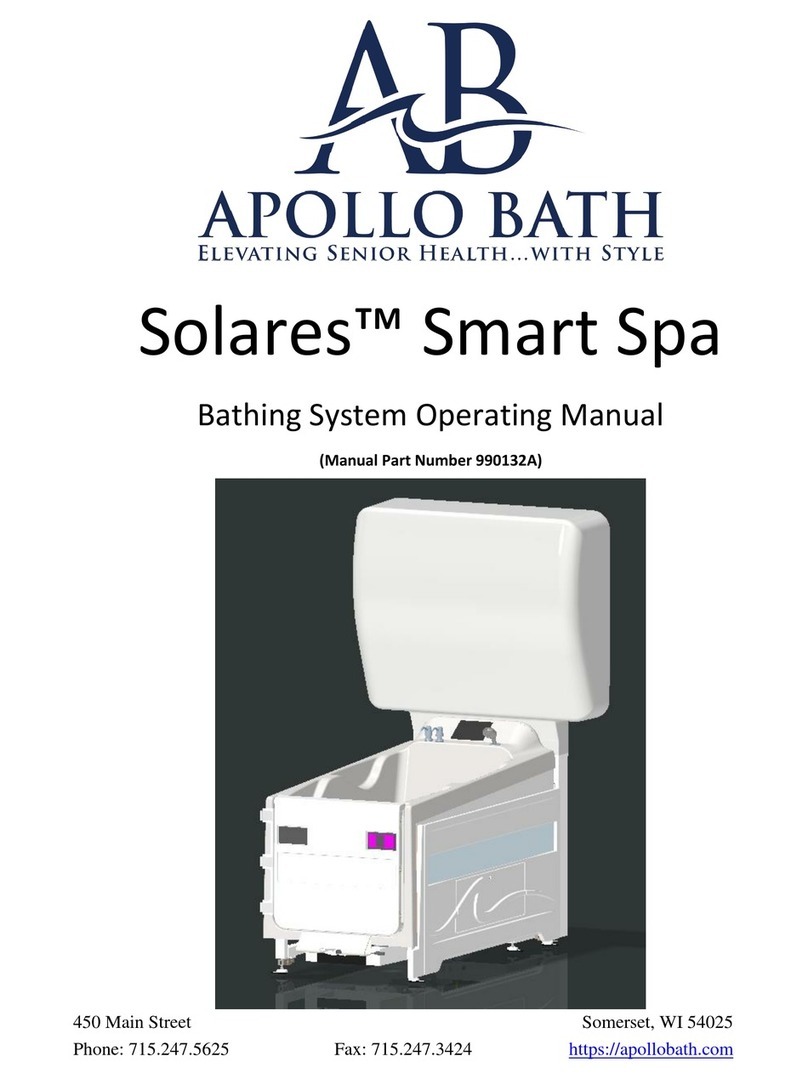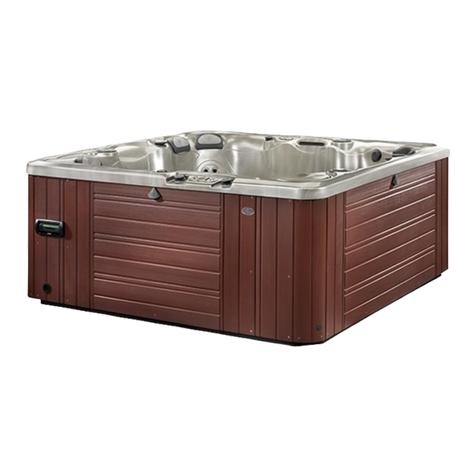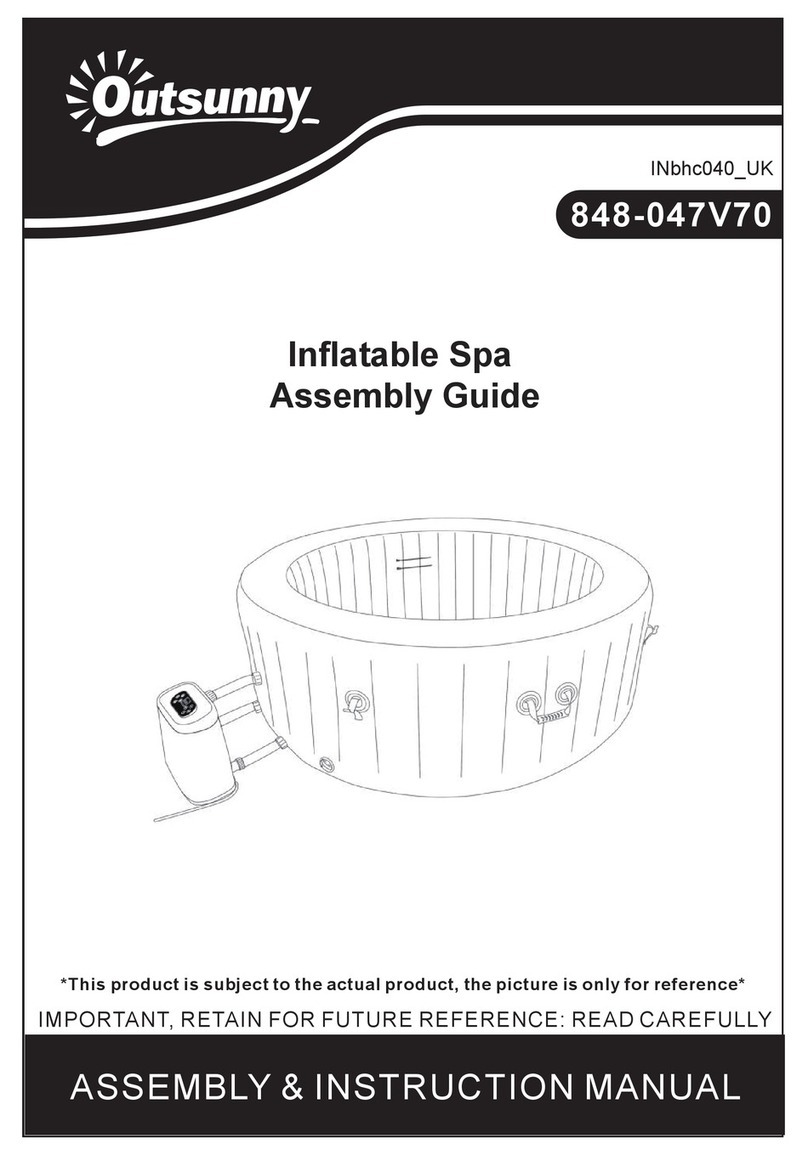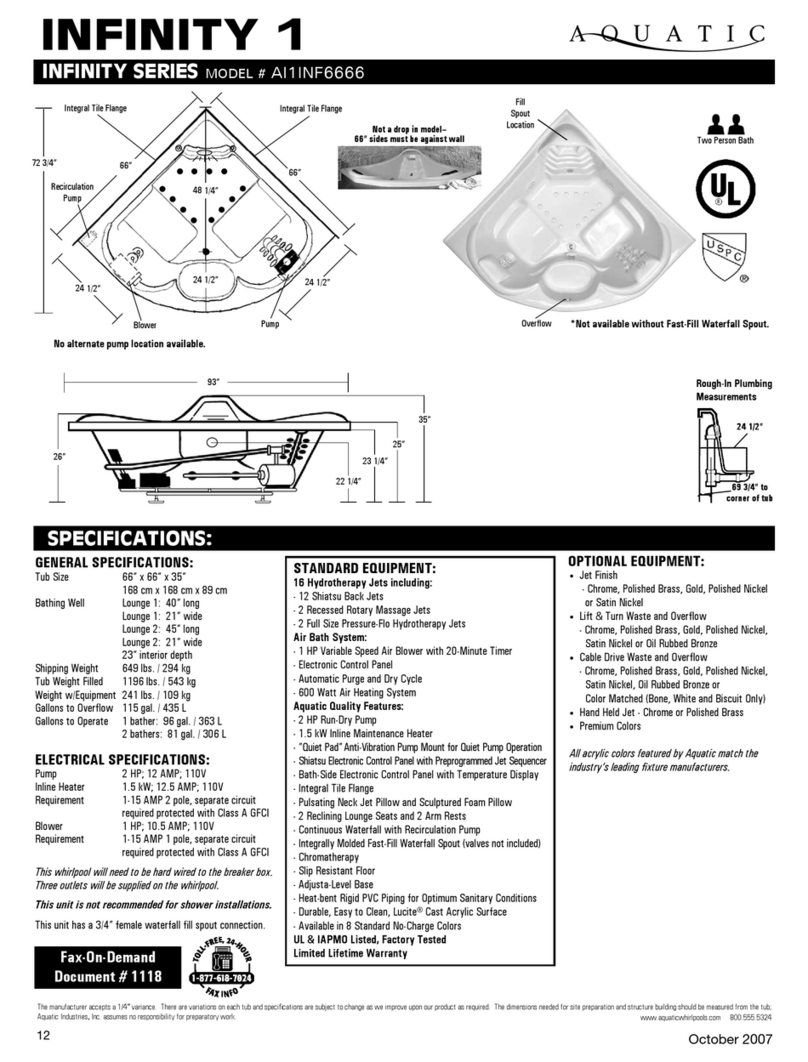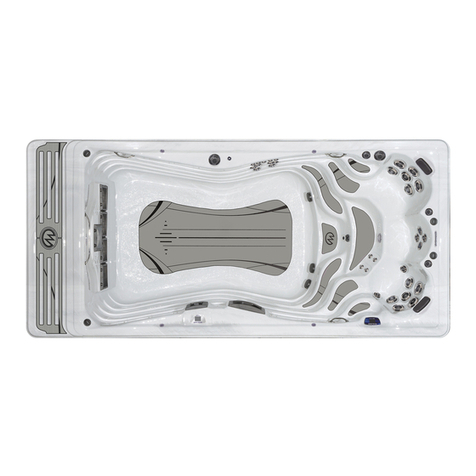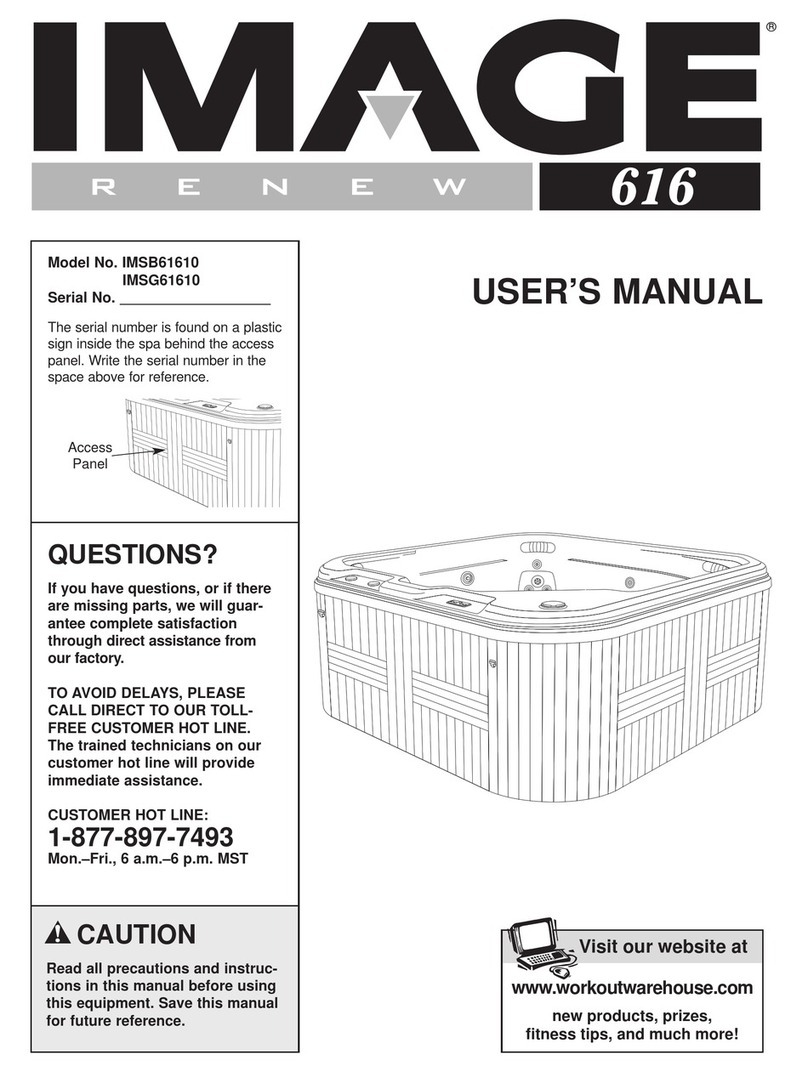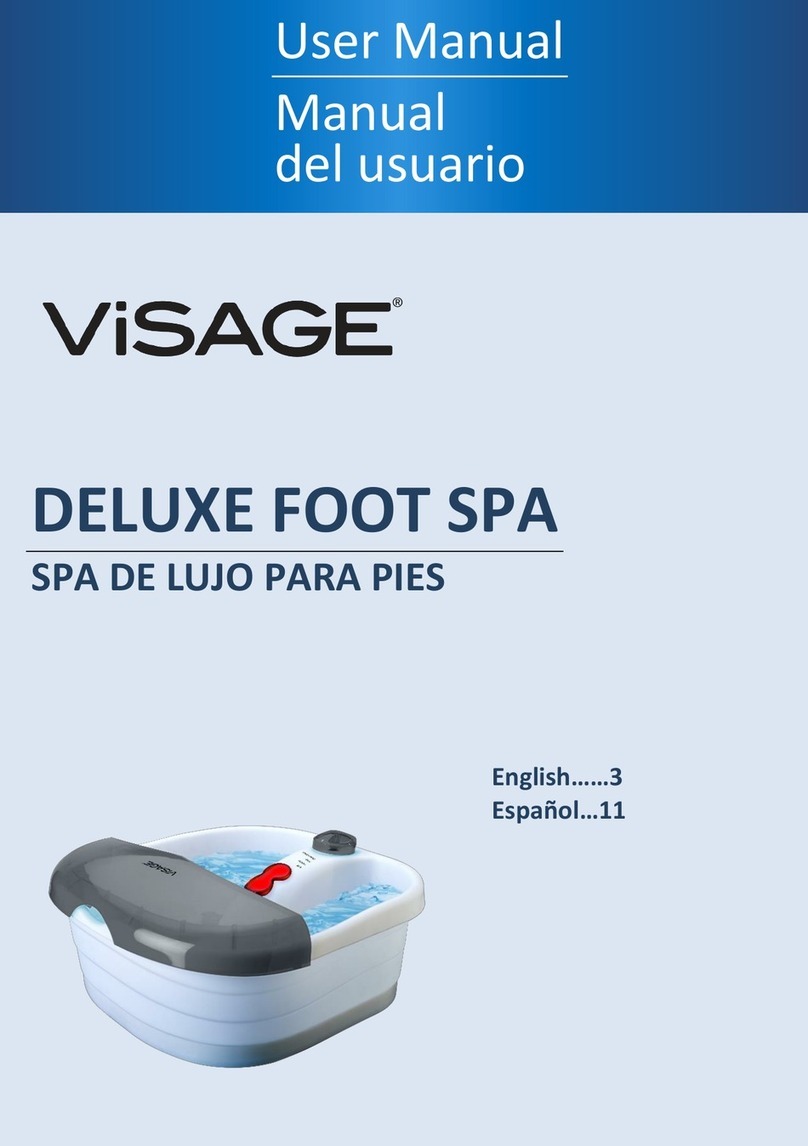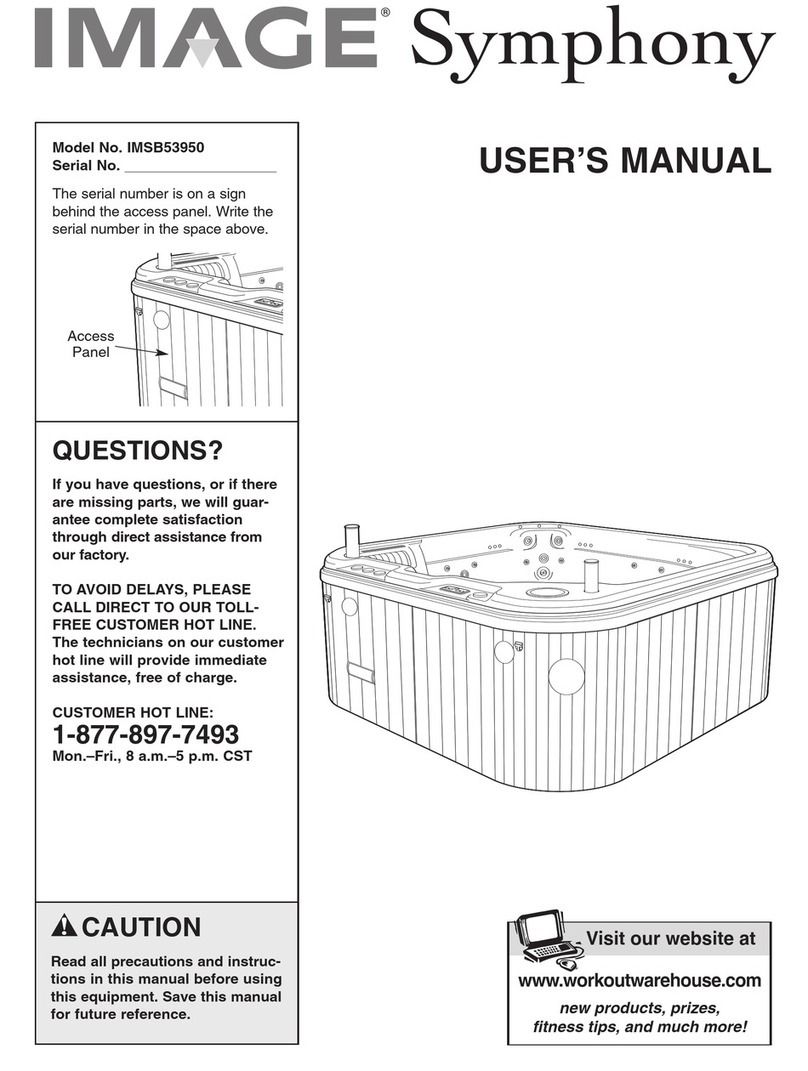
IMPORTANT SAFETY INFORMATION
READ AND FOLLOW ALL INSTRUCTIONS
Read manufacturer’s safety information provided with all optional equipment.
Warning—Riskofinjury: Children,theelderly,andthe
infirmshouldnotusethespaunlesstheyaresupervisedatall
times. Infants should not be permitted in the spa at water
temperatures over 100°F (38°C).
Spa water temperature in excess of 104°F is not recom-
mended. Highwatertemperaturesinexcessof104°F(40°C)
and prolonged periods of use can raise internal human body
temperatureexcessivelyandimpairthebody’s ability to regu-
late its internal temperature.
Pregnantwomenandpeoplewithheartcirculatorycondi-
tions,ordiabetes,shouldconsulttheirphysiciansbeforeusing
the spa at water temperatures over 100°F (38°C).
Limit your initial use of the spa to 10-15 minutes. High
body temperatures affect people differently; consult your
physicianabout yoursafetyand comfortbefore using thespa.
If your spa product does not have a thermometer, we
recommendthatyouuseamedical(clinical)typethermometer
for an accurate measurement of spa water temperatures.
Other types of thermometer, generally available, such as
thoseused forswimmingpools arenot sufficiently accurateto
determine spa water temperature.
Extra care should be taken when using the spa and
consuming alcoholic beverages. Alcohol, drugs, or certain
medications, such as tranquilizers, affect a person’s ability to
withstand high temperatures and may produce dangerous
effects,includingdrowning. Personsusingmedicationshould
consult with a physician before using a spa.
Danger -— Risk of injury: Do not remove the suction grille!
Itisasafetydeviceandmustalwaysbeinplaceonthesuction
fittingtominimize thepotential hazardofhairentanglementor
body entrapment.
Keep body, hair, and clothing a minimum of 12 inches
away from suction fitting and skimmers at all times when the
spa is operating. Hair longer than shoulder length should be
secured close to the head, or a bathing cap should be worn.
Do not operate the spa if the suction cover is broken or
missing. Contactyour Dealer for replacement cover if broken
or missing.
The wet surface of the spa is slippery. Use care when
entering and exiting.
DANGER — Risk of child drowning: Donotpermit children
to use this product unless they are closely supervised. The
use of a locked cover is highly recommended to prevent
unattended access.
DANGER — RISK OF ELECTRICAL SHOCK: Wheninstall-
ing and operating this electrical equipment, basic safety pre-
cautions should always be adhered to including the following.
Warning: A wire connector is provided at the electrical
cabinet on this spa to connect a minimum No. 8 AWG (8.4
mm2) solid copper conductor between this spa and any metal
equipment, metal enclosures of electrical equipment, metal
water pipe, or conduit within 5 feet (1.5 m) of the spa.
Do not use electrically connected devices such as televi-
sion, radio, or stereo speakers, lights, cooking devices, or
telephones within 5 feet (1.5 m) of the spa while the spa is
being used. Lighting fixtures must not be located directly
above or within 5 feet (1.5 m) of the spa. If located within 10
feet (3.0 m) of the spa, they must be on a circuit protected by
a GFCI (Ground Fault Circuit Interrupter).
All fixed metal objects located within 5 feet of the spa,
such as fence posts, railings, door frames, greenhouse struc-
tures,gutters,etc.,mustbeattachedtothebondingbaronthe
outsideofthespaelectricalcabinetusing#8solidcopperwire.
With #8 solid copper wire, bond the spa to the house
electrical panel or approved local bond.
The spa must be installed with adequate access and
water drainage system (refer to Installation) Instructions, to
drain water away from electrical components.
CAUTION: Do not turn power ON to the spa unless it is filled
withwaterto thenormalwaterlevel,which istothewaterlevel
indicatormarkontheskimmerframe. Activatingthespawhen
there is an insufficient amount of water can damage the
circulation pump and may cause a fire.
Spas installed in a 230VAC circuit:
DANGER — RISK OF ELECTRICAL SHOCK
Your spa must be equipped with a GFCI at the Main
Electrical Panel. At initial start-up and before each use
thereafter with power ON, push the GFCI test button. The
resetbuttonshouldpopout. Pushthisbuttonintoreset. Ifthe
interrupter fails to operate in this manner, there is a ground
current flowing or a device malfunctioning, indicating the
possibilityofelectricalshock. Turnoffpoweranddonotuse
the spa until the source of the breakdown has been
identified and corrected.
